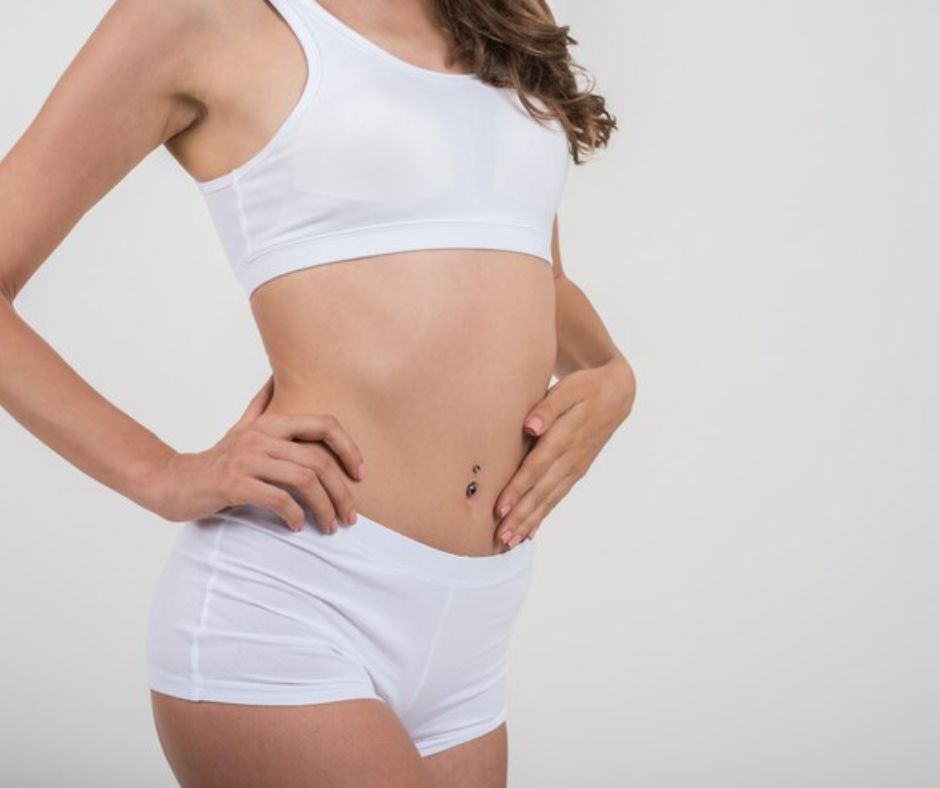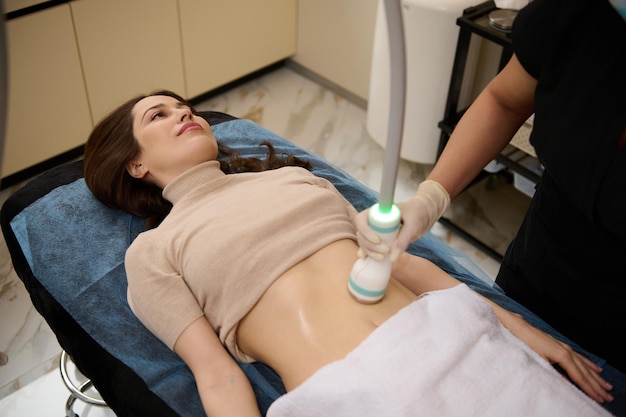Everything You Need to Know About Stomach Tightening Treatment
5 min read
xr:d:DAF6BF3QSRk:4,j:4818141340942694075,t:24011605
Achieving a toned and firm stomach is a common goal for many individuals, whether to enhance confidence, recover from pregnancy, or combat the effects of aging. Stomach tightening treatments have emerged as popular options to address loose skin, stubborn fat deposits, and lax muscles in the abdominal area. This comprehensive guide explores various non-surgical and surgical stomach tightening treatments available today, helping you understand their benefits, considerations, and effectiveness.
Understanding Stomach Tightening
What is Stomach Tightening?
Stomach tightening refers to procedures designed to improve the appearance and firmness of the abdominal area. These treatments target common concerns such as:
- Loose Skin: Often caused by weight loss, pregnancy, or aging.
- Stubborn Fat: Difficult-to-lose fat deposits that resist diet and exercise.
- Muscle Laxity: Weak or separated abdominal muscles, especially post-pregnancy.
Who Can Benefit from Stomach Tightening Treatments?
Candidates for stomach tightening treatments include individuals who:
- Have loose or sagging skin on the abdomen
- Desire a more toned and contoured abdominal area
- Struggle with stubborn fat deposits despite diet and exercise
- Experience muscle laxity or separation, especially after pregnancy or weight loss

Non-Surgical Stomach Tightening Treatments
Radiofrequency (RF) Treatments
RF treatments use radiofrequency energy to heat the deeper layers of skin, stimulating collagen production and tightening the skin over time. These treatments are non-invasive, require no downtime, and are suitable for mild to moderate skin laxity.
Ultrasound Therapy
Ultrasound therapy uses focused ultrasound energy to target deep layers of tissue, promoting collagen production and tightening the skin. It is effective for treating both fat deposits and mild to moderate skin laxity.
Cryolipolysis (Fat Freezing)
Cryolipolysis, commonly known as fat freezing, selectively targets and freezes fat cells, which are then naturally eliminated from the body over several weeks. This treatment is non-invasive and is effective for reducing stubborn fat deposits in the abdominal area.
Laser Therapy
Laser therapy involves using laser energy to heat the skin and stimulate collagen production, resulting in tighter and smoother skin. It is effective for mild to moderate skin laxity and can improve the overall texture of the skin.
Surgical Stomach Tightening Procedures
Tummy Tuck (Abdominoplasty)
A tummy tuck is a surgical procedure that removes excess skin and fat from the abdomen and tightens the abdominal muscles. It is ideal for individuals with significant skin laxity or muscle separation, often due to pregnancy or weight loss.

Liposuction
Liposuction is a surgical procedure that removes stubborn fat deposits from specific areas of the body, including the abdomen. While it primarily targets fat removal rather than skin tightening, it can be combined with other procedures for enhanced results.
Mini Tummy Tuck
A mini tummy tuck is a less invasive version of a full tummy tuck, focusing on the lower abdomen. It is suitable for individuals with mild to moderate skin laxity and muscle laxity confined to the lower abdominal area.
Choosing the Right Treatment
Factors to Consider
When selecting a stomach tightening treatment, consider the following factors:
- Severity of Concerns: Assess the extent of loose skin, fat deposits, and muscle laxity.
- Treatment Goals: Define your desired outcome in terms of skin tightening, fat reduction, and muscle contouring.
- Downtime: Consider your availability for recovery and downtime associated with surgical vs. non-surgical procedures.
- Budget: Evaluate the cost of each treatment option, including any potential follow-up sessions or maintenance treatments.
Consultation with a Specialist
Consultation with a qualified cosmetic surgeon or dermatologist is essential to determine the most suitable treatment based on your individual anatomy and goals. During the consultation, discuss your concerns, expectations, medical history, and any previous treatments or surgeries.
What to Expect During and After Treatment
Non-Surgical Treatments
Non-surgical stomach tightening treatments typically involve multiple sessions spaced several weeks apart. During treatment, you may experience mild discomfort or heat sensation, which is usually well-tolerated. Results gradually improve over several months as collagen production increases and the skin tightens.
Surgical Procedures
Surgical stomach tightening procedures such as tummy tucks and liposuction require anesthesia and are performed in a surgical setting. Recovery times vary but generally involve several weeks of limited activity and follow-up appointments to monitor healing. Results are noticeable immediately after surgery and continue to improve as swelling subsides and scars fade.
Post-Treatment Care and Maintenance
Non-Surgical Treatments
After non-surgical treatments, follow any post-care instructions provided by your provider. Maintain a healthy lifestyle with regular exercise and a balanced diet to optimize and prolong results. Some treatments may require periodic maintenance sessions to sustain results.
Surgical Procedures
Following surgical procedures, adhere to your surgeon’s post-operative instructions, which may include wearing compression garments, avoiding strenuous activities, and attending follow-up appointments. Attend scheduled check-ups to monitor healing progress and address any concerns.

Risks and Considerations
Non-Surgical Treatments
Non-surgical stomach tightening treatments generally have minimal risks and side effects, such as temporary redness, swelling, or discomfort. Serious complications are rare but may include burns or changes in skin pigmentation.
Surgical Procedures
Surgical procedures carry higher risks, including infection, bleeding, and adverse reactions to anesthesia. Scarring is also a consideration, although techniques have advanced to minimize visible scars. It’s essential to discuss potential risks and complications with your surgeon before proceeding.
Long-Term Results and Maintenance
Non-Surgical Treatments
Long-term results from non-surgical treatments depend on individual factors such as skin type, age, and lifestyle habits. Maintenance treatments may be recommended periodically to sustain results, especially for collagen-stimulating treatments like RF and ultrasound therapy.
Surgical Procedures
Surgical procedures such as tummy tucks can provide long-lasting results, especially when combined with a healthy lifestyle. While weight fluctuations and aging can affect results over time, maintaining a stable weight and practicing good skincare can help preserve your outcome.
Conclusion
Stomach tightening treatments, including skin tightening, offer effective solutions for individuals seeking to achieve a firmer and more contoured abdominal area. Whether opting for non-surgical methods like RF and ultrasound therapy or surgical procedures such as tummy tucks and liposuction, understanding the benefits, considerations, and expected outcomes is crucial. Consultation with a qualified specialist is essential to determine the most suitable treatment based on your unique anatomy, goals, and lifestyle. With proper care and maintenance, you can enjoy smoother, tighter skin and enhanced confidence in your appearance for years to come.





